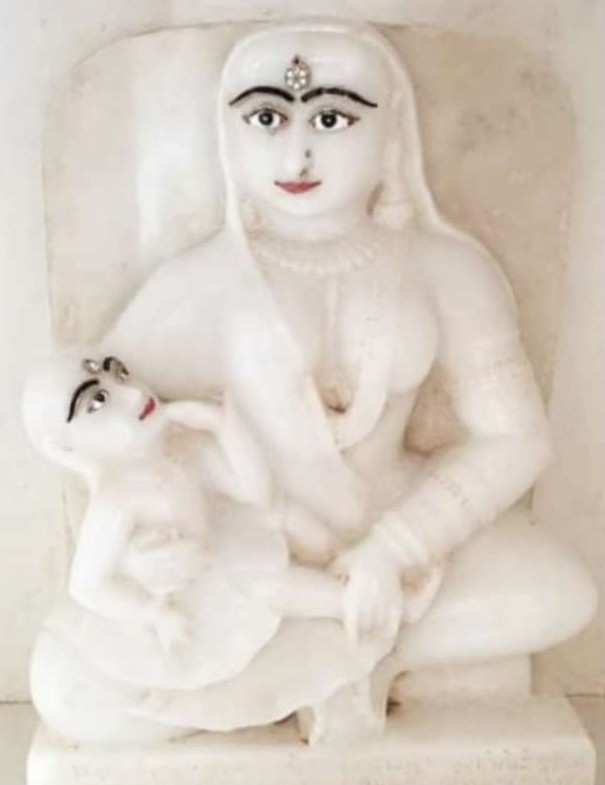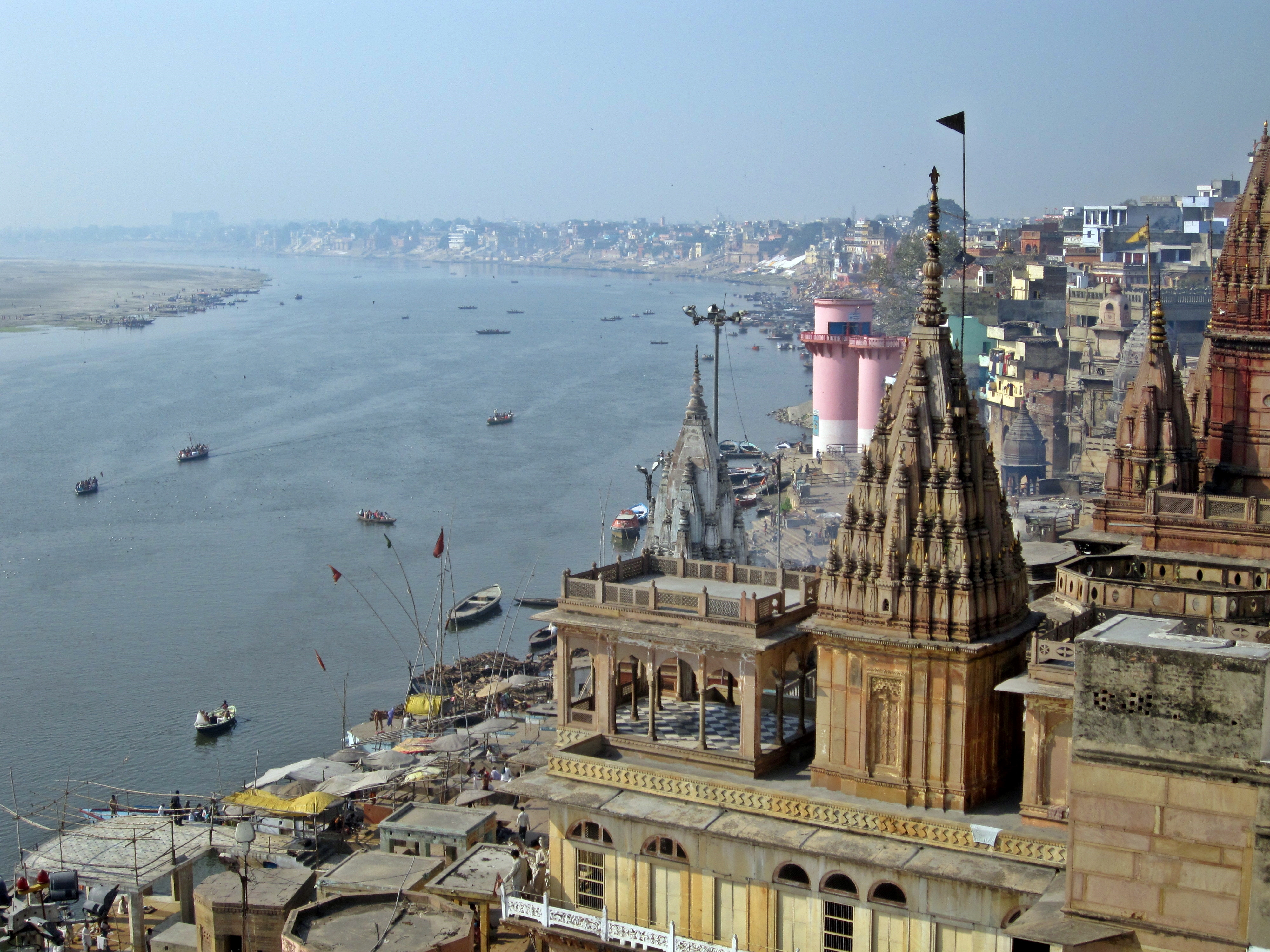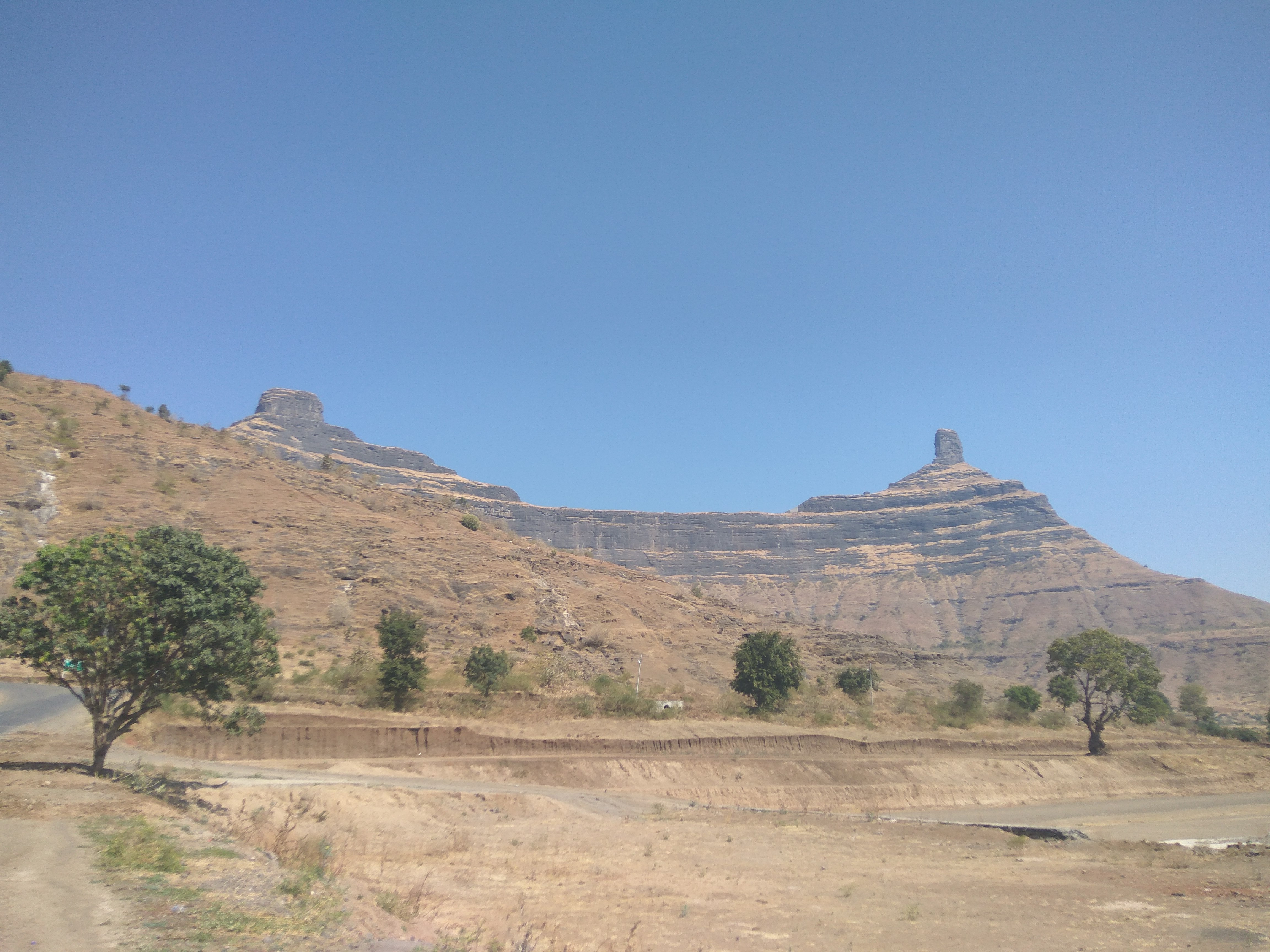|
Rsabha
Rishabhanatha, also ( sa, ऋषभदेव), Rishabhadeva, or Ikshvaku is the first (Supreme preacher) of Jainism and establisher of Ikshvaku dynasty. He was the first of twenty-four teachers in the present half-cycle of time in Jain cosmology, and called a "ford maker" because his teachings helped one across the sea of interminable rebirths and deaths. The legends depict him as having lived millions of years ago. He was the spiritual successor of Sampratti Bhagwan, the last Tirthankar of previous time cycle. He is also known as Ādinātha which translates into "First (''Adi'') Lord (''nātha'')", as well as Adishvara (first Jina), Yugadideva (first deva of the yuga), Prathamarajeshwara (first God-king), Ikshvaku and Nabheya (son of Nabhi). Along with Mahavira, Parshvanath, Neminath, and Shantinath; Rishabhanath is one of the five Tirthankaras that attract the most devotional worship among the Jains. According to traditional accounts, he was born to king Nabhi and que ... [...More Info...] [...Related Items...] OR: [Wikipedia] [Google] [Baidu] |
Tirthankara
In Jainism, a ''Tirthankara'' (Sanskrit: '; English: literally a 'ford-maker') is a saviour and spiritual teacher of the ''dharma'' (righteous path). The word ''tirthankara'' signifies the founder of a '' tirtha'', which is a fordable passage across the sea of interminable births and deaths, the '' saṃsāra''. According to Jains, a ''Tirthankara'' is an individual who has conquered the ''saṃsāra'', the cycle of death and rebirth, on their own, and made a path for others to follow. After understanding the true nature of the self or soul, the ''Tīrthaṅkara'' attains '' Kevala Jnana'' (omniscience). Tirthankara provides a bridge for others to follow the new teacher from ''saṃsāra'' to ''moksha'' (liberation). In Jain cosmology, the wheel of time is divided in two halves, Utsarpiṇī' or ascending time cycle and ''avasarpiṇī'', the descending time cycle (said to be current now). In each half of the cosmic time cycle, exactly twenty-four ''tirthankaras'' grace thi ... [...More Info...] [...Related Items...] OR: [Wikipedia] [Google] [Baidu] |
Parshvanath
''Parshvanatha'' (), also known as ''Parshva'' () and ''Parasnath'', was the 23rd of 24 ''Tirthankaras'' (supreme preacher of dharma) of Jainism. He is the only Tirthankara who gained the title of ''Kalīkālkalpataru (Kalpavriksha in this "Kali Yuga").'' Parshvanatha is one of the earliest ''Tirthankaras'' who are acknowledged as historical figures. He was the earliest exponent of Karma philosophy in recorded history. The Jain sources place him between the 9th and 8th centuries BCE whereas historians consider that he lived in the 8th or 7th century BCE. Parshvanatha was born 273 years before Mahavira. He was the spiritual successor of 22nd tirthankara Neminatha. He is popularly seen as a propagator and reviver of Jainism. Parshvanatha attained moksha on Mount Sammeda ( Madhuban, Jharkhand) popular as Parasnath hill in the Ganges basin, an important Jain pilgrimage site. His iconography is notable for the serpent hood over his head, and his worship often includes Dharanendra ... [...More Info...] [...Related Items...] OR: [Wikipedia] [Google] [Baidu] |
Gomukha
In Jain cosmology, Gomukha is the guardian god or Yaksha (attendant deity) of Rishabhanatha, the first Tirthankara. Legacy Worship Gomukha along with Dharanendra is the most popular yaksha in Jainism. Iconography According to Jain tradition, Gomukha is depicted as two or four armed yaksha riding on an elephant. As the name suggests, gomukha has the head of a bull. Gomukha carries a goad in left hand and noose in left. In other two lower arms gomukha carries ''varada'' and conch. The yaksha-yakshi pair sculptures of Gomukha-Chakreshwari are one of the most favoured along with Ambika- Sarvanubhuti and Dharanendra-Padmavati. The image of Gomukha yaksha in Ellora caves is noteworthy. File:Dadabari, Mehrauli - Gomukha.jpg, Gomukha at Dadabari, Mehrauli File:Trilok Teerth Dham - Exterior - Gomukha.jpg, Gomukha at Trilok Teerth Dham File:Shri Atma Vallabh Jain Smarak - gomukha.jpg, Gomukha at Shri Atma Vallabh Jain Smarak See also * Dharanendra * Chakreshwari *Padmavati *A ... [...More Info...] [...Related Items...] OR: [Wikipedia] [Google] [Baidu] |
Nyagrodha
''Ficus benghalensis'', commonly known as the banyan, banyan fig and Indian banyan, is a tree native to the Indian Subcontinent. Specimens in India are among the largest trees in the world by canopy coverage. It also known as the "strangler fig" because it starts out as epiphyte, that is, leaning on another tree that it ends up suffocating. Description ''Ficus benghalensis'' is an evergreen, fast-growing tree found mainly in monsoon and rainforests, that can reach a height of up to 30 meters. It is resistant to drought and mild frost. It produces propagating roots which grow downwards as aerial roots on the branches that grow downward like lianas. Once these roots reach the ground, they take root and become woody trunks and supportive. The figs produced by the tree are eaten by birds such as the Indian myna. Fig seeds that pass through the digestive system of birds are more likely to germinate and sprout earlier. Reproduction Banyan trees reproduce easily by seed or by stak ... [...More Info...] [...Related Items...] OR: [Wikipedia] [Google] [Baidu] |
Gopachal Hill
Gopachal rock-cut Jain monuments, also called ''Gopachal Parvat'' Jaina monuments, are a group of Jain carvings dated to between 7th and 15th century. They are located around the walls of the Gwalior Fort, Madhya Pradesh. They depict Tirthankaras in seated Padmasana posture as well as standing Kayotsarga posture, in the typical naked form of Jain iconography. The number of Jain rock shrines at Gwalior, with numerous monumental statues, is unmatched anywhere else. James Burgess writes: "In the 15th century, during the reign of the Tomara Rajas, the Jains seem to have been seized with an uncontrollable impulse to convert the cliff that sustains the fort into a great shrine in honour of their religion, and in a few years excavated the most extensive series of Jaina caves known to exist anywhere." The Gopachal Jain collosi cave temple is one of the Archaeological Survey of India's ''Adarsh Smarak Monument'' along with other monuments in the Gwalior Fort. Location The Gopachal ... [...More Info...] [...Related Items...] OR: [Wikipedia] [Google] [Baidu] |
Bawangaja
Bawangaja (meaning 52 yards) is a famous Jain pilgrim center in the Barwani district of southwestern Madhya Pradesh in India. Located about 6 kilometers south of River Narmada, its main attraction is the world's second largest megalithic statue (carved out of the mountain) of Lord ''Rishabhadeva'' (largest being the '' Statue of Ahimsa''), the first Jain Tirthankara. The statue is high. The center is located in the Satpura Range and is about 8 km from a Barwani town. Village Bawangaja is a small town, situated in the middle of Satpura range, five miles from the town of Barwani, Madhya Pradesh. As per the 2011 Census of India, the Bawangaja village accommodates 94 families having a total population of 494 of which 242 are males while 252 are females. Statue The tall megalithic statue (carved out of a single rock) of Lord Rishabhadeva (the first ''Tirthankara'' and founder of Jainism) is situated at a height of , in the middle of the Satpura range. It was created early ... [...More Info...] [...Related Items...] OR: [Wikipedia] [Google] [Baidu] |
Statue Of Ahimsa
The ''Statue of Ahimsa'' is located at Mangi-Tungi, in Nashik, in the Indian state of Maharashtra. It is the tallest Jain statue in the world as per Guinness World Records. The statue depicts the first Jain Tirthankara, Rishabhanatha. The statue is tall – including pedestal. The statue has been carved out of the Mangi-Tungi hills, which are considered to be sacred by the Jains. The statue was built by the inspiration of the Jain nun (Aryika) Gyanmati, and under the guidance of Aryika Chandanamati. The project was chaired and directed by Raveendra Kirti. The construction of the statue started in 2002 under the guidance of Chief Secretary Pannalalji Papdiwal and Chief engineer C. R. Patil working president Anil Jain-Delhi. It was completed on 24 January 2016 (Tithi-Magh Krishna Ekam). The statue was sculpted by Moolchand Ramchand Nahata Firm. History The inspiration of the idol was given by the Jain nun Gyanmati in 1996. ''Shilapujan'' (foundation stone laying ceremony) ... [...More Info...] [...Related Items...] OR: [Wikipedia] [Google] [Baidu] |
Jinasena
Jinasena (c. 9th century CE) was a monk and scholar in the ''Digambara'' tradition of Jainism. He was patronized by the Rashtrakuta king Amoghavarsha I. He was the author of ''Adipurana'' and '' Mahapurana''.Early medieval developments (500–1100) Encyclopaedia Britannica Jinasena was the disciple of '' Acharya Virasena'' and he completed the commentary '''' on '''', a revere ... [...More Info...] [...Related Items...] OR: [Wikipedia] [Google] [Baidu] |
Adi Purana
Adi or ADI may refer to: Names and titles * Adi (mythology), an Asura in Hindu faith who appears in the Matsya Purāṇa * Adi (name), a given name in Hebrew and a nickname in other languages * Adi (title), a Fijian title used by females of chiefly rank Places * Adi (Khanapur), Belgaum District, Karnataka, India * Adi (Chikodi), Belgaum District, Karnataka, India * Ahmedabad Junction railway station, Ahmedabad, India (code ADI) * Adi, Israel, a community settlement in northern Israel * Adi Island, an island in West Papua, Indonesia * Arandis Airport, Arandis, Namibia (IATA: ADI) Organizations * Aerodynamics Inc., a small airline in the US * Aircraft Designs Inc, an aircraft design firm in Monterey, California * Alfred Deakin Institute, at Deakin University, in Geelong, Australia * American Documentation Institute, former name of the Association for Information Science and Technology * Analog Devices, Inc, producer of semiconductors (ADI is their symbol on the New York Stock Ex ... [...More Info...] [...Related Items...] OR: [Wikipedia] [Google] [Baidu] |
Mount Kailash
Mount Kailash (also Kailasa; ''Kangrinboqê'' or ''Gang Rinpoche''; Standard Tibetan, Tibetan: གངས་རིན་པོ་ཆེ; ; sa, कैलास, ), is a mountain in the Ngari Prefecture, Tibet Autonomous Region of China. It has an altitude of . It lies in the Gangdise Shan, Kailash Range (Gangdisê Mountains) of the Transhimalaya, in the western part of the Tibetan Plateau. Mount Kailash is less than 100 km towards the north from the western trijunction of the borders of China, India, and Nepal. Mount Kailash is located close to Lake Manasarovar and Lake Rakshastal. The sources of four major Asian rivers lie close to this mountain and the two lakes. These rivers are the Indus River, Indus, the Sutlej, the Brahmaputra River, Brahmaputra, and the Karnali River, Karnali (a tributary of the Ganges). Mount Kailash is considered sacred in four religions: Hinduism, Buddhism, Jainism and Bon. Etymology The mountain is known as “'” (; var. ' ) in Sanskrit. The nam ... [...More Info...] [...Related Items...] OR: [Wikipedia] [Google] [Baidu] |
Moksha (Jainism)
Sanskrit ' or Prakrit ''mokkha'' refers to the liberation or salvation of a soul from ''saṃsāra'', the cycle of birth and death. It is a blissful state of existence of a soul, attained after the destruction of all karmic bonds. A liberated soul is said to have attained its true and pristine nature of infinite bliss, infinite knowledge and infinite perception. Such a soul is called ''siddha'' and is revered in Jainism. In Jainism, ''moksha'' is the highest and the noblest objective that a soul should strive to achieve. In fact, it is the only objective that a person should have; other objectives are contrary to the true nature of soul. With the right view, knowledge and efforts all souls can attain this state. That is why Jainism is also known as ' or the "path to liberation". According to the Sacred Jain Text, Tattvartha sutra: Bhavyata From the point of view of potentiality of , Jain texts bifurcates the souls in two categories–''bhavya'' and ''abhavya''. ''Bhavya'' ... [...More Info...] [...Related Items...] OR: [Wikipedia] [Google] [Baidu] |
Akshaya Tritiya
Akshaya Tritiya, also known as Akti or Akha Teej, is an annual Hindu and Jain spring festival. It falls on the third ''tithi'' (lunar day) of the bright half (''Shukla Paksha'') of the month of Vaisakha. It is regionally observed as an auspicious day by Hindus and Jains in India, Gupte 1994, p. 5 it signifies the "third day of unending prosperity". Meaning In Sanskrit, the word ''akshaya'' (अक्षय) means "never decreasing" in the sense of "prosperity, hope, joy, success", while ''tritiya'' means "third phase of the moon". It is named after the third lunar day of the spring month of Vaisakha in the Hindu calendar, when it is observed. Hindu tradition Akshaya Tritiya is considered auspicious by Hindus and Jains in many regions of India for new ventures, marriages, expensive investments such as gold or other property, and any new beginnings. It is also a day of remembrance for the loved ones who have died. The day is regionally significant for women, married or unmarri ... [...More Info...] [...Related Items...] OR: [Wikipedia] [Google] [Baidu] |







